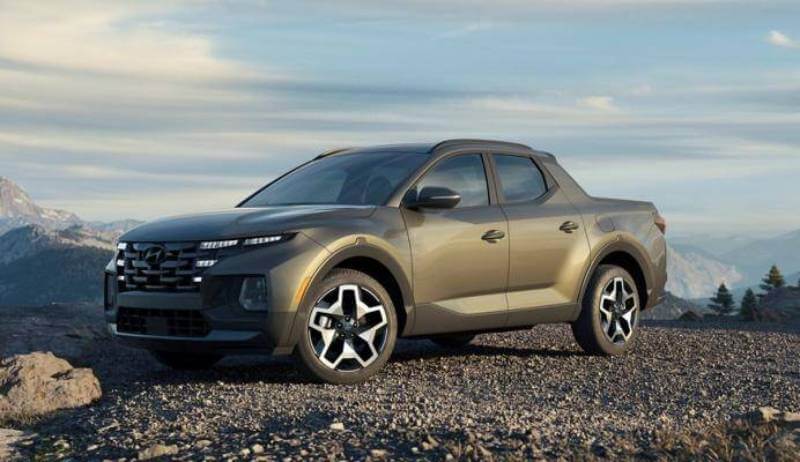Hyundai is finally tempted to play in the pick-up segment, aka double cabin. The Korean manufacturer has finally introduced the production version of the Hyundai Santa Cruz. After being presented for a long time as a concept model, the first-generation Santa Cruz is ready to go out and be owned by consumers. It seems that the Mitsubishi Triton, Toyota Hilux, and Ford Ranger should be aware of the presence of this car.

Hyundai has a complete range of models in the SUV segment, from Venue, Kona, Tucson, Santa Fe, Palisade, and Nexo. Yep, the only thing absent is the pick-up. In fact, the US market is very promising. For this reason, Santa Cruz is currently being worked on to focus on the market in USA, a country where double cabin SUVs are in great demand. The ‘H tilted’ manufacturer claims Santa Cruz combines the best conception between the SUV, truck and crossover segments. The production schedule will start in June this year, to be sold to welcome the summer.
The development of Santa Cruz is aimed at meeting the lifestyle needs of modern urban consumers, with a number of supporting features. Moreover, the design, which is very modern and tends to be futuristic, the design is adopted from the latest Tucson style. Yep, there are similarities in the design of Santa Cruz to other Hyundai SUV families. The transport body as an attraction has dimensions of up to 1,270 mm in length with various advantages that the majority of its rivals do not have, especially on the security side.

The maneuverability and efficiency of the Santa Cruz are said to be comparable to the standard mid-size SUV on the market. Under the bonnet, there is a four-cylinder petrol engine with 192 hp power and 244 Nm of torque. Unlike most modern engines, Santa Cruz still relies on naturally aspirated petrol engines, aka without turbo induction or superchargers. If you feel less fierce, there is still an engine option with 276 hp and 420 Nm of torque.
The engine output is channeled to all wheels that adopt a 4-wheel drive (4WD) drivetrain, then an 8-speed dual-clutch automatic transmission. For the sake of practicality exploiting its performance, installed paddle shifters behind the wheel. So with these technical specifications, Santa Cruz has a carrying capacity of up to 1,600 kg, and increases to 2,300 kg when the turbo boost works.

Regarding styling, it is said that the Santa Cruz exterior design adopts the facelift style of the Tucson that was launched in 2020. The shape of the front grille, which is like an inverted trapezoid, dominates the front fascia, which also seems to be integrated with the LED DRL series. The position of the headlights is located on the right and left front bumper edges, like the current Hyundai SUV, namely Kona, Santa Fe and Palisade.
The lower part of the front bumper is attached to a skid plate to mark the utilitarian elements and functions of Santa Cruz. Then on the sides appear wide fenders, which cover the 20-inch alloy wheels to support the best angles for eating off-road terrain. While at the rear, the T-shaped LED bar lights are its identity, the first to appear on a Hyundai product.

So far, Hyundai has not released detailed photos for the interior of Santa Cruz. However, it is stated that the layout and design direction are similar to the Tucson cabin. A pair of 10-inch digital displays are attached to function as an infotainment system and meter cluster. Connectivity features with Hyundai’s flagship BlueLink system come standard in Santa Cruz.
Orders have been opened since this month, while the Santa Cruz sale price has not been released by Hyundai at least until production starts next June. Some of the technologies Santa Cruz will bring include forward collision avoidance, lane keep assist, driver attention warning, blind-spot warning, blindspot camera, safe exit assist, highway drive assistance, surround-view monitor, and rear-cross traffic alert.





